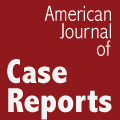Karyotype Analysis in Neural Tube Defect Cases: Experiences of a Single Center
Salih Serin, Murat Bakacak, Bulent Kostu, Onder Ercan, Deniz C. Arikan, Fazil Avci
Med Sci Tech 2015; 56:26-30
DOI: 10.12659/MST.893505
Available online: 2015-02-05
Published: 2015-02-05
Background:
The aim of this study was to present the karyotype outcomes of 344 cases that underwent prenatal diagnosis tests in which neural tube defects were detected by means of advanced ultrasound scan.
Material and Methods:
Complete data were collected for 344 patients who were diagnosed with neural tube defects. Detailed fetal ultrasonography was performed in all cases to investigate any additional anomalies. Eighty-one fetuses underwent prenatal chromosome analysis after being diagnosed with open neural tube defects.
Results:
The mean age of the patients was 28.4 years (range, 16–46 years), and the mean gestational age was determined as 18.9 weeks (range, 11–38 weeks). The 3 most frequent anomalies encountered in the patients who were scanned were spina bifida and ventriculomegaly (134 patients, 39%), ventriculomegaly (102 patients, 30%), and encephalocele (39 patients, 11%).
Conclusions:
Neural tube defect is the second most frequently encountered anomaly in pregnancy. Even though it is not considered necessary by many health centers to perform karyotype analyses for patients diagnosed with isolated Neural tube defects, there are certain literature data indicating aneuploidy. There is a general opinion stating that it is necessary to make karyotype analysis for cases where Neural tube defects are accompanied by other systems anomalies.
Keywords: Karyotyping, Neural Tube Defects, Prenatal Diagnosis



